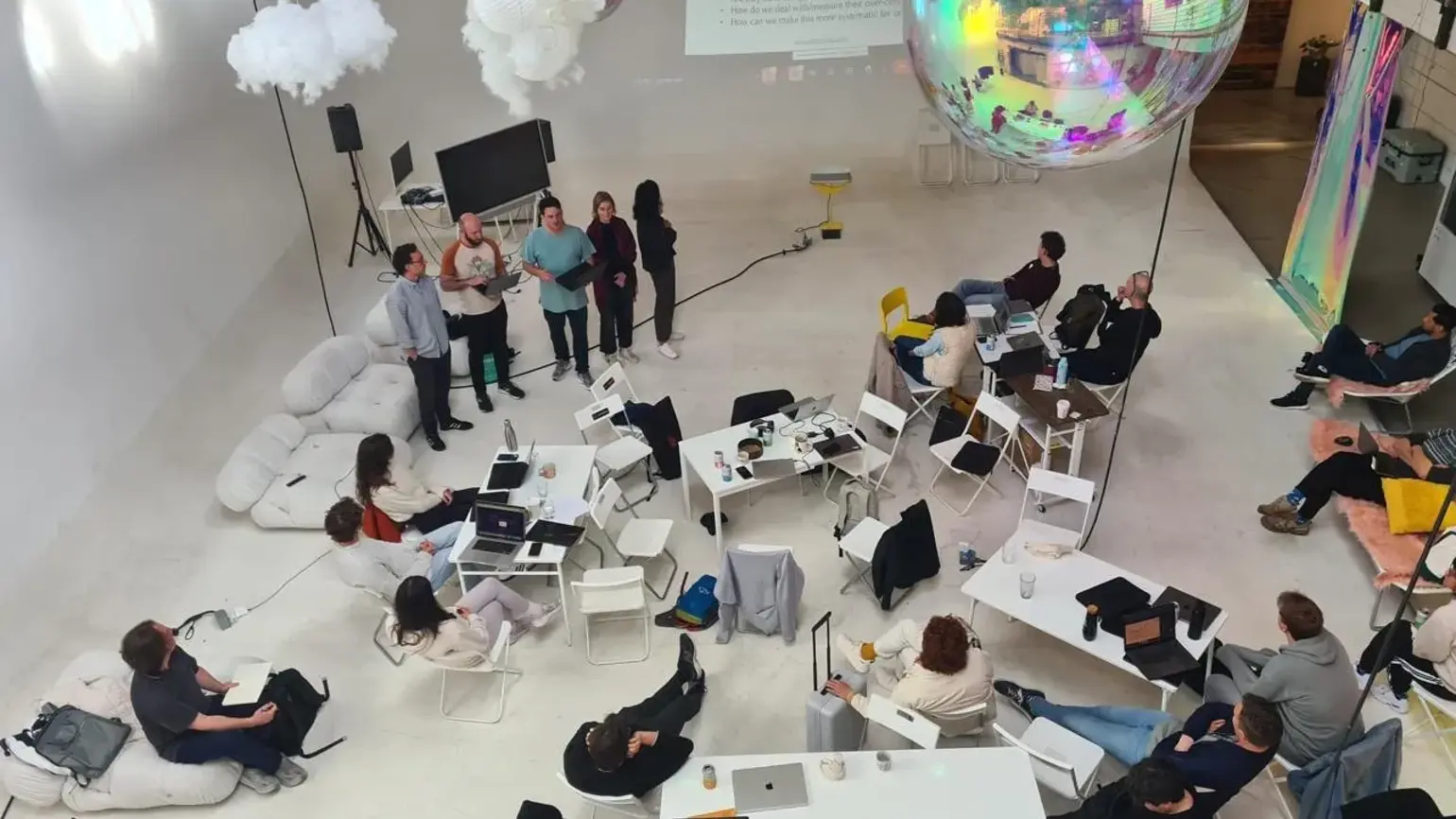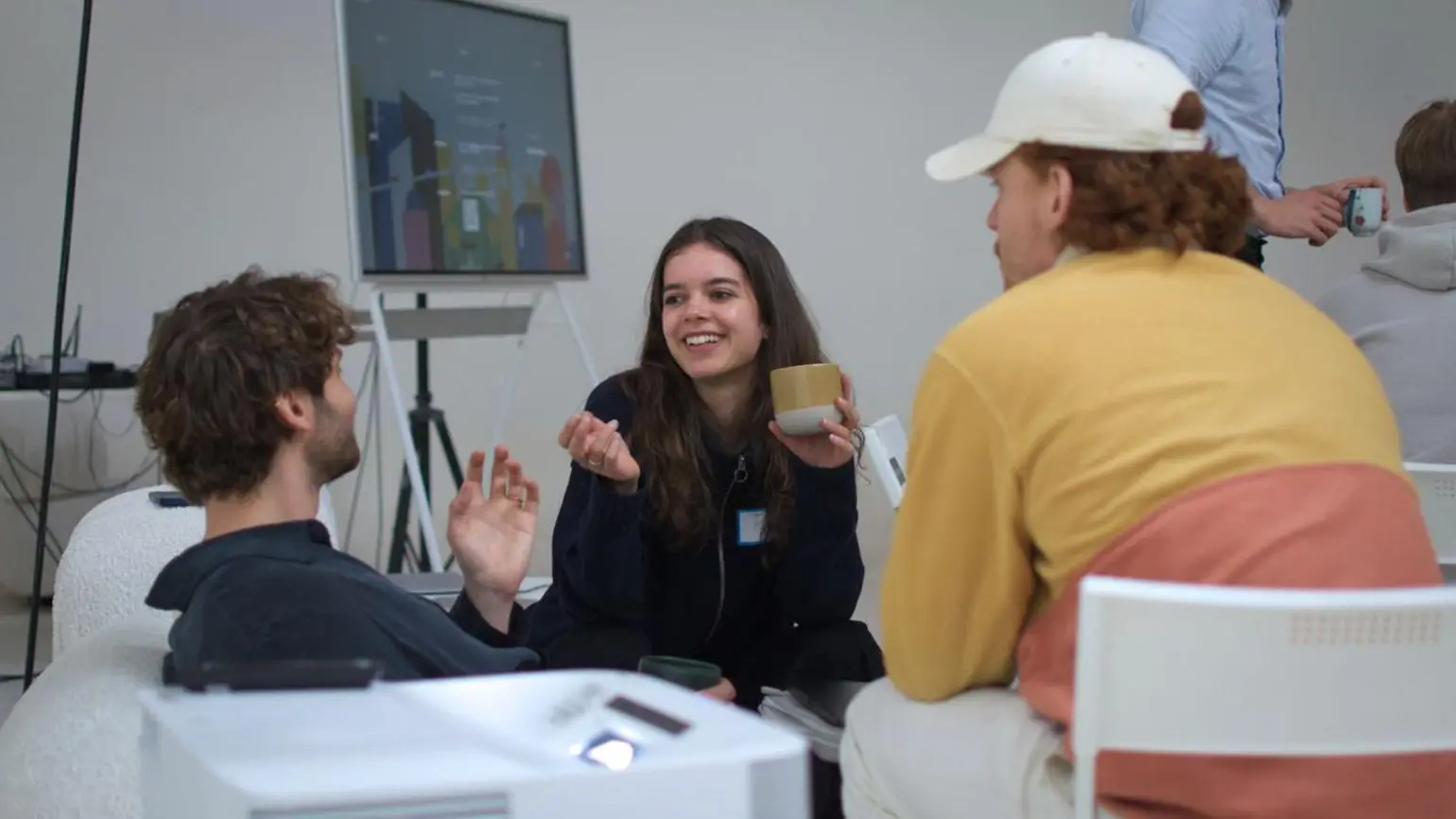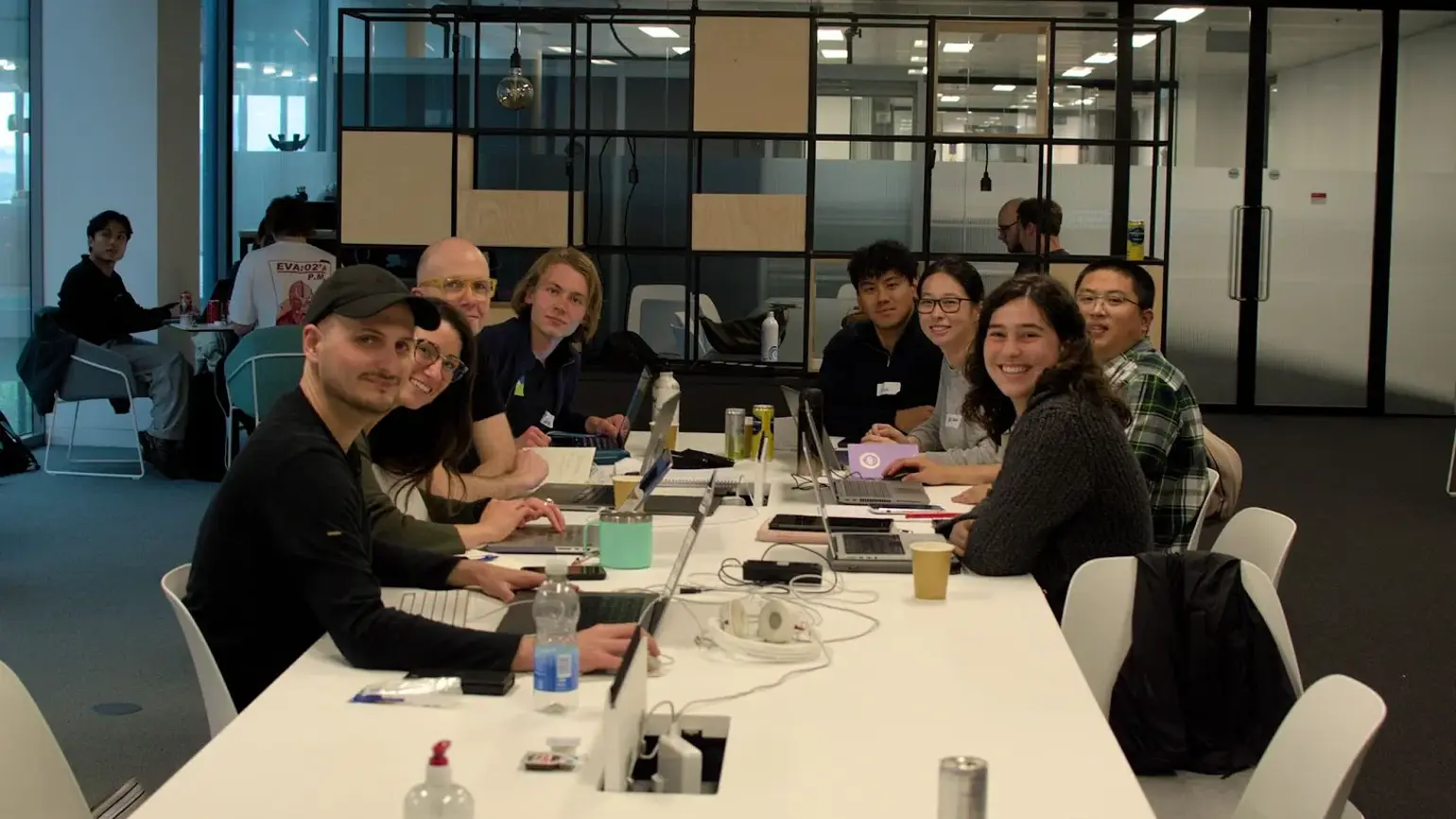25 September 2025
Innovator Circles: Cultivating the ambitious communities where breakthroughs begin
Pranay Shah, Product Manager, on our Innovator Circles pilot and why small investments can unlock enormous potential.

Why we’re building a high-ambition culture
ARIA’s mission is to unlock highly ambitious technological breakthroughs that have the potential to improve society for everyone. It’s no small task, and we believe that the best way to achieve this is by supporting those willing to think differently about what might be possible and who want to throw themselves into pursuing speculative, non-mainstream ideas that have huge potential.
But transformative ideas rarely arrive fully formed – they’re often born as whispers, hunches, and ‘what-ifs’ shared in informal environments. In these spaces, close-knit peer groups discuss early-stage, counterintuitive ideas and push each other to be more ambitious.
Throughout history these environments have proven critical in driving culture and breakthroughs – whether in the sciences, such as The Lunar Society and Gresham College group, or in the humanities and arts, such as The Inklings and The Bloomsbury Group. We saw an opportunity to build on these examples to address a top-of-funnel challenge: how to create the right conditions – the culture, communities, and intellectual spaces – for breakthroughs to emerge in today’s more diverse environment.
This is a core part of our philosophy for cultivating talent and building a more ambitious research culture in the UK. Our hypothesis is simple: investing in the creation of more diverse, high-trust, and deeply technical communities is a direct investment in future talent and breakthroughs.
Innovator Circles: An intentional experiment
This hypothesis was born from both world-changing historical examples and what we see today in clusters such as San Francisco and Boston. Here, self-organised, informal groups raise the ambition bar of participants and push them to real-world action. Most of the aspirational ideas don’t work but those that do transform the world. For those whose ideas fail, they’ll have spent their time on important work, laying the foundations that will allow them to pursue their next bold idea.
Within ARIA’s Experimentation Unit – a function of our Product team that designs pilots to test hypotheses for how we can increase ARIA’s chances of success – we explore new ways of building the conditions for breakthroughs. This product-led approach helps us learn directly from practice, rather than perfecting ideas in-house only for them to unravel in the real world.
For this experiment, we ran a low-lift, high-learning six-month pilot to see if catalysing the formation of technical, self-directed groups could raise ambition, build connectivity, and spark breakthrough collaborations. We provided mission-aligned individuals with light-touch funding and the freedom to convene ‘Innovator Circles’ in their own way.
We selected our first cohort of five leads to maximise what we learned: we were flexible on the areas we wanted to learn most about while retaining a focus on those we felt were critically important. While the groups all had to have a deeply scientific focus, our initial group leads came from a wide range of career stages, from a PhD student and a metascientist to a founder and an Associate Professor.
The results: An experimental success in catalysing ambition
The topics which the five circles convened around were:
- Computationally accelerating the natural sciences
- Under-appreciated technical bottlenecks to nuclear fusion
- Carbon-negative industrial production
- Biological computation in living systems
- Theoretical biology
Each of the leads had the freedom to choose their own formats and adapt dynamically throughout the experiment. Most groups had regular fortnightly gatherings, ranging from journal clubs to research seminars.
These created high-ambition, high-trust spaces that encouraged members towards more important work. The Carbon-Negative Industrial Production Circle’s used formats ranging from intellectual sparring sessions featuring field experts to informal gatherings with peers. The group’s discussions led to two researchers developing their ideas to a stage where they’re now being funded. Reflecting on the impact of the circle, at the end of the pilot one researcher said it was “really helpful for helping think through an ambitious roadmap and how to position it.”
The CompMotifs circle met once a month using a ‘learn, ideate, test’ approach. Mornings featured expert talks followed by brainstorming sessions. Afternoons saw hackathons where members could test what they’d learned, allowing them to probe assumptions and push the frontier further. In just six-months, this circle created six scientific software solutions and are writing a paper on their findings.
Our learnings: What we learned as a funder
In running this experiment we wanted to learn if nucleating Innovator Circles could have a tangible benefit for both ARIA and the UK R&D ecosystem. We constantly sought signals beyond just success metrics. Below are the key learnings that we took away.
Signals of success
The circles showed us the highly impactful outcomes such groups can have. These include:
- Outcome 1: They raised the ambition bar. The foundational element we cared about was ambition. Like-minded peer groups are essential in pushing people to be their most aspirational. 80% of the leads strongly agreed that they met more ambitious and talented individuals through creating their circle. This influence showed up in career trajectories too. In the Nuclear Fusion Circle, for example, regular deep-dive discussions and a reading group led the lead to start doing some contract work with one of the most advanced fusion companies – a tangible shift towards tackling harder, more important problems.
- Outcome 2: They created high-trust environments. We wanted to learn if these circles could become safe spaces for intellectual debate. The answer was a resounding yes. The lead of the Theoretical Biology Circle shared: “The power of a room full of smart people who are engaged and have taken the time to develop a solid background in a subject is priceless. The knowledge frontier is not as hard to reach as I thought in many fields, and when people stop protecting their own intellectual territory, the willingness to be the least educated smart person about a particular topic is so powerful”.
- Outcome 3: They catalysed new ideas & collaborations. Ambition, nurtured by trust, leads to action. 60% of our leads strongly agreed that the circles gave them permission to pursue work they wouldn’t have attempted before. The Cell Computation Circle brought together a national network of researchers which had have led to concrete plans to generate new research proposals.
- Outcome 4: They directly contributed to ARIA’s mission. Through fostering ambition and collaborations, these circles also directly benefited ARIA’s mission. We saw direct referrals for highly technical roles and a fostering of ideas that ultimately led to one circle member being funded by an ARIA grant. This demonstrates the circles’ ability to identify and cultivate high-potential individuals and cutting-edge ideas.
- Outcome 5: They built outputs for real-world impact. Encouragingly, the circles built towards real world impact in just six-months. Members of the Carbon Negative Industrial Production Circle are now building a new FRC (R&D org) for decreasing the cost of downstream processing in biomanufacturing whilst researchers in the Theoretical Biology Circle are working on AAV promoter engineering and the CompMotifs group created six new scientific software solutions.
Learnings for the future
This experiment wasn’t just about the initial cohort of circles we catalysed or only about what worked. We also wanted to learn how to improve future initiatives. So, what else did we learn?
- On funding amounts: We realised that, in most cases, the main barrier to setting up these groups is creating a culture where people feel encouraged to build them. We found that a relatively small amount of flexible funding (<£2000/month) is catalytic and can unlock enormous activity. The funding was basically a proxy for a social contract where ARIA says “do this thing!”.
- On curation: It was easy to believe that having a lot of talented people discussing technical topics would lead to great outcomes, but we found that the key to the best groups was in curation and trust – not size. The most impactful groups maintained a core of committed members who attended the vast majority of meetups regularly. The curation consisted of deliberate and thoughtful participant selection in order to create as diverse a group as possible whilst maintaining similar interests. This led to high-trust groups where all members could easily discuss incomplete and/or counterintuitive ideas comfortably.
- On improving funding timelines: We intentionally designed a short six-month experiment to accelerate our time to learnings, but feedback said this may be too short to create the most impactful groups in people’s spare time, despite the outcomes above. Going forward, we’re almost doubling our funding period whilst still aiming to be catalytic in setting up as many circles as possible.
- On increasing ‘soft support’: Instead of funding amounts, we learned that the level of soft support is invaluable. Our first cohort of leads shared that support such as resources on how to build good groups and increasing connectivity between groups would have benefited them. Going forward, we’ll be expanding this area of support through more structured programming and additional resources.

What’s next: An open invitation to build with us
The outcomes of this small-cohort experiment confirm our initial hypothesis. Importantly, the successes were not defined by the participants’ existing credentials, but by the environments they built and the ambition they unlocked. We believe this potential exists everywhere in the UK and are now launching an open call.
With that, we’re excited to announce a call for proposals for ARIA Innovator Circle Leads: an opportunity to create or grow your own circle with up to ten months’ funding.
We aren’t looking for a particular type of person from a specific institution. We’re looking for catalysts – people who can achieve these kinds of outcomes regardless of their starting point. Your vision for a technical community and your ability to convene exceptional talent are what matter most.
If this is you: we encourage you to apply, with your vision for a group that will push the frontiers of your field, or envision a new one.
If this describes someone you know: the person in your lab or network who sparks connections and raises the ambition of everyone around them – please share this with them. Help us find the people who are building the future of UK science and technology.
Applications for Innovator Circles are now closed.
